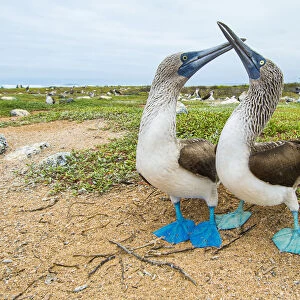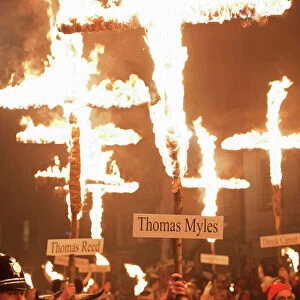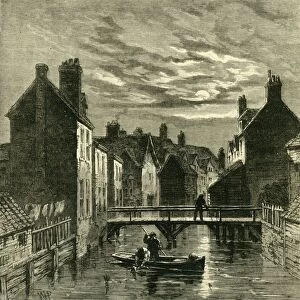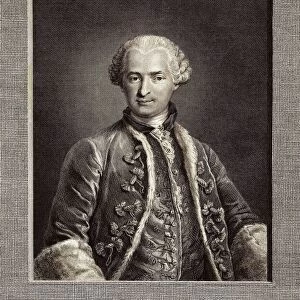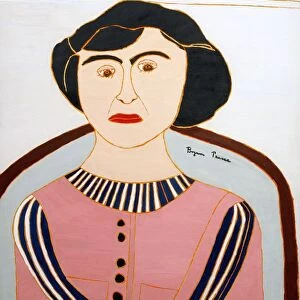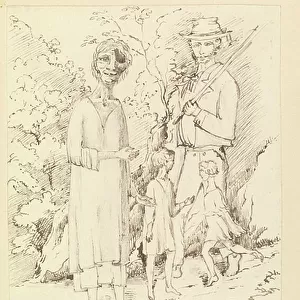Home > Animals > Birds > Passerines > Honeyeaters > Tui
Seru Thakombau [Seru Epenisa Cakobau], 1815 - 83; King of Fiji, 1852-74, 1849 (watercolour, graphite)
![]()

Wall Art and Photo Gifts from Fine Art Finder
Seru Thakombau [Seru Epenisa Cakobau], 1815 - 83; King of Fiji, 1852-74, 1849 (watercolour, graphite)
7295608 Seru Thakombau [Seru Epenisa Cakobau], 1815 - 83; King of Fiji, 1852-74, 1849 (watercolour, graphite) by Fanshawe, Admiral Sir Edward Gennys (1814-1906); 25.6x17.5 cm; National Maritime Museum, London, UK; (add.info.: Creator: Admiral Sir Edward Gennys Fanshawe
Mounted in album with PAI4605-PAI4635, PAI4637-PAI4670.; No.30. Medium includes graphite. No. 30 in Fanshawe's Pacific album, 1849-1852. Captioned by the artist on the album page below the image: 'Seru, Thakambau, or Tiu Viti (King of Feejee) dressed and painted as when staying on board. When we arrived at Rewa, he landed and put crossed lines of lamp black over the vermillion. Octr 1849'. A head and torso detail of this drawing, to just below the armbands, is reproduced in Fanshawe's 1904 biography, f. p. 226. Thakambau [sic], as Fanshawe calls him, is one of the most important figures of Fiji history, first as a local warrior and warlord under his father Tanoa, the Vinivalu (paramount chief) of Bau whom he succeeded in 1852. This was also the year he proclaimed himself Tui Viti (King of Fiji) at the start of a 19-year campaign to unite the islands under his rule. He was successful by 1871 and tried to start a constitutional monarchy, but three years later, with Fiji under threat of seizure by the USA, he ceded sovereignty of the islands to Britain and had no dynastic successors except as Vinivalu of Bau. Fanshawe arrived in Fiji knowing of his fearsome reputation, and immediately invited him aboard 'Daphne' on Sunday 29 September 1849 in order to convey the views he was charged with delivering. To act as interpreter, Thakombau was accompanied by the local Wesleyan missionary, James Calvert (1813-92), to whom he was greatly attached, though he did not himself convert to Christianity and abandon cannibalism until 1854, when he took the additional name Epenisa (Ebeneezer). He greatly impressed Fanshawe, who did a sketch recording his visit that day (see PAI4637) and described him in his journal as over six feet in height and 'the beau-ideal of a savage chief'. This more formal portrait was done later when he accompanied the 'Daphne's' visit to Rewa, about 2 October, and stayed on board. Fanshawe on this occasion recorded how his guest silently contemplated one of the ship's 32-pounder guns and then said with a sigh, ' Ah, England is a full-grown nation': also his more aphoristic remark that 'Christianity and 32-pounders are better than swords and spears and heathenism', both of which suggest Thakombau's grasp of political realities. In respect of the chief's waist garment he also noted that the 'most valued present on Fiji was a good length of the fine native tapa-cloth', and that messengers sent to them invariably unwound one brought as a diplomatic gift from round their own waists while giving their message, while the chief in turn wound it round his while giving the reply. Thus 'a chief's momentary wealth can be gauged by the depth of his waist-roll', (p. 236). The fact that Fanshawe's inscription calls the subject 'Tiu Viti' (properly Tui Viti - King of Fiji) also shows that this must have been written after 1852, probably when he assembled the album. The present drawing and PAI4637 were both made when Thakombau was about 34 - the same age as Fanshawe - and may be the earliest portraits of him. The next appears to be one made between September 1854 and February 1857 during Henry Denham's voyage in the 'Herald' , reproduced as frontispiece to vol. 1 of Thomas Williams's 'Fiji and the Fijians' (1859), though photographs were also taken of him in later life. Fanshawe did nine drawings of Fiji and Fijians, including two studies of local weapons, PAI4631- PAI4639.); © National Maritime Museum, Greenwich, London
Media ID 38339882
© © National Maritime Museum, Greenwich, London / Bridgeman Images
Chief Cultural Costume Folk Dress Leaders Nationa Costume Traditional Clothes Traditional Clothing Traditional Costumes Turbanned Water Color Water Colour Watercolors Art Fine Art Traditional Costume
FEATURES IN THESE COLLECTIONS
> Animals
> Birds
> Passerines
> Honeyeaters
> Tui
> Arts
> Artists
> C
> Edward Calvert
> Arts
> Artists
> C
> Henry Calvert
> Arts
> Artists
> C
> Thomas Cross
> Arts
> Artists
> D
> Edward Dayes
> Arts
> Artists
> D
> Thomas Day
> Arts
> Artists
> H
> Thomas Henry
> Arts
> Artists
> S
> Edward Savage
> Arts
> Still life artwork
> Still life art
> Portrait painting
> Arts
> Still life artwork
> Portrait painting
> Fine Art Finder
> Artists
> Admiral Sir Edward Gennys Fanshawe
EDITORS COMMENTS
This stunning watercolour and graphite print captures the powerful presence of Seru Thakombau, also known as Seru Epenisa Cakobau, King of Fiji from 1852 to 1874. Painted by Admiral Sir Edward Gennys Fanshawe in 1849, this portrait showcases Thakombau dressed and painted in traditional Fijian attire while staying on board the ship 'Daphne'.
Thakombau was a significant figure in Fiji's history, rising from a local warrior under his father to eventually proclaim himself Tui Viti (King of Fiji) in 1852. He embarked on a campaign to unite the islands under his rule, successfully achieving this goal by 1871. However, faced with threats of seizure by the USA, he ceded sovereignty of the islands to Britain three years later.
Fanshawe's detailed depiction highlights Thakombau's imposing stature and fierce reputation as a savage chief. The artist was greatly impressed by him during their encounter aboard 'Daphne', noting Thakombau's insightful remarks about England and political realities.
This portrait not only serves as a visual record of an important historical figure but also provides insight into Fijian culture and traditions through its intricate details such as the waist garment made of fine tapa-cloth. It is a testament to both Fanshawe's artistic skill and Thakombau's influence as a leader during a pivotal period in Fiji's history.
MADE IN AUSTRALIA
Safe Shipping with 30 Day Money Back Guarantee
FREE PERSONALISATION*
We are proud to offer a range of customisation features including Personalised Captions, Color Filters and Picture Zoom Tools
SECURE PAYMENTS
We happily accept a wide range of payment options so you can pay for the things you need in the way that is most convenient for you
* Options may vary by product and licensing agreement. Zoomed Pictures can be adjusted in the Cart.

![Seru Thakombau [Seru Epenisa Cakobau], 1815 - 83; King of Fiji, 1852-74, 1849 (watercolour, graphite) Seru Thakombau [Seru Epenisa Cakobau], 1815 - 83; King of Fiji, 1852-74, 1849 (watercolour, graphite)](/p/690/seru-thakombau-seru-epenisa-cakobau-38339882.jpg.webp)
